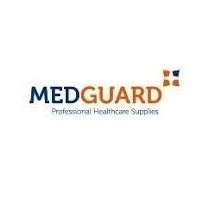Waterproof sheets called bed pads are placed beneath your sheets to shield your mattress from nocturnal spills. Bed pads for incontinence are frequently used on infant and kid mattresses to prevent bedwetting.
Incontinence pads might be a topic of interest to you. Incontinence pads or sheets, sometimes called containment pads, are a type of device used to absorb urine held in place by undergarments or underwear.
Incontinence sheets are made specifically for urine incontinence in men and women, as opposed to feminine hygiene pads, which are far less absorbent.
Although you might not have thought of using incontinence pads to manage your continence concerns, they have many advantages for the user. Let\'s have a look at about the incontinence pads in the following article:
Disposable vs. Reusable pads:
Incontinence bed pads come in two wide varieties such as disposable and reusable.
Bed pads or sheets are excellent disposable products. They are designed to be used when washing the bed pads in between uses is impractical, and are often constructed from a less durable fabric.
Reusable incontinence sheets may be washed between uses and are helpful for multiple uses. Reusable bed pads can be a little more expensive initially, but you will end up saving more money overall.
Many individuals consider utilizing washable products wherever possible because single-use things can harm the environment.
Bed pads for incontinence with wings:
Winged versions of many reusable bed mats are also available. The additional cloth on the sides of the bed pad that you tuck under the mattress is referred to as tuck-in tails or wings in other contexts.
This keeps the bed pads in place and gives you peace of mind knowing it won\'t move around underneath the covers. Bed pads for incontinence with wings are ideal for restless sleepers.
Waterproof bed Pad:
Bed pads are available in a wide range of sizes, with 34" x 36" being the most popular. This size works well for other furniture in your home and twin or hospital beds.
Smaller sizes, such as 18" x 24" or 24" x 36", are better suited for furniture, such as wheelchairs or dining chairs, but they can also be used over beds. The 36" by 72" bed cushions on the bigger spectrum are ideal for a queen or king-size beds.
How to clean reusable pads for incontinence:
The pad should be cleaned after each use in the case of the majority of reusable incontinence bed pads, including Tena incontinence pants.
Most bed pads may be machine cleaned in cool or warm water and dried on a low tumble dry setting, though you should always read the manufacturer\'s washing instructions before washing.
Be cautious if you use additives like fabric softeners or chlorine bleaches because they may have an impact on the absorbency. You are welcome to wash them on your own or with any other regular laundry items.
Why people need to wear incontinence pads:
While not everyone needs to use an incontinence pad, those with overactive bladders or difficulty controlling their bowel movements require this device to assist them in avoiding accidents.
They might be comfier for certain people than standard underpants. Additionally, wearing pads can frequently stop skin rashes and irritation.
Bottom Line:
A cost-effective and ecologically friendly choice for protection against nighttime mishaps is Tena incontinence pants. They are the ideal thing to have on hand due to their variety and ease of usage and maintenance. Check out the best variety of pads if you want additional protection at night. Finally, these are the above-explained details about the Incontinence bed pads.


